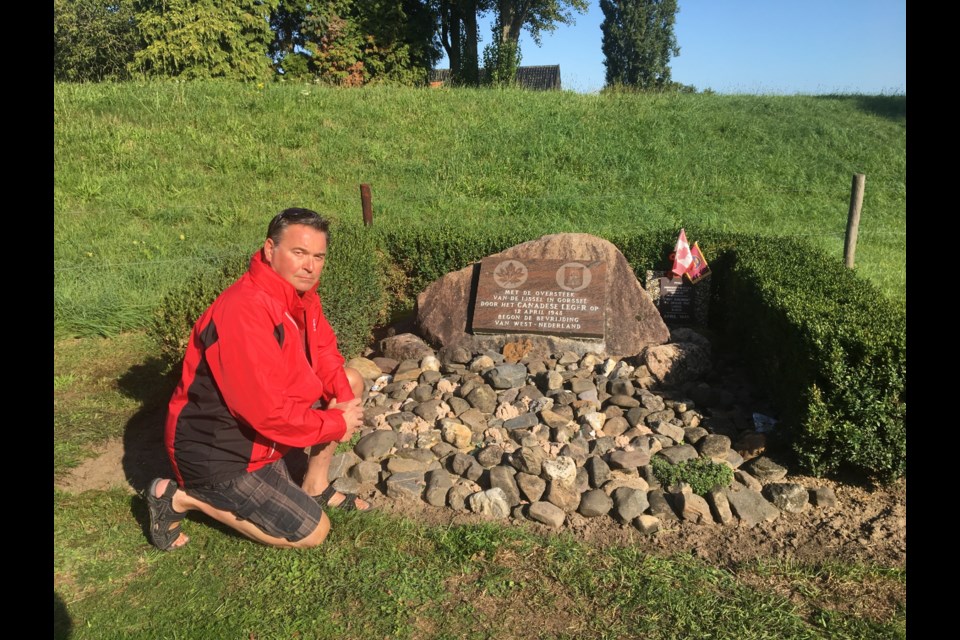By John Hetherington.
Today, May 5, marks the 75th anniversary of the liberation of the Netherlands by the Canadian First Army in 1945.
Sadly due to the current worldwide COVID pandemic the ceremonies to mark this historic event throughout the Netherlands have all been cancelled. Thousands of Canadians who were planning on making the pilgrimage to honour their relatives who participated in this final epoch struggle of World War 2 have now also had to cancel their travel plans. Despite the cancellations of all of these ceremonies, today is a day for all of us to remember the story of the Canadian struggle to liberate the Netherlands.
In July 1943 elements of the 1st Corps of the Canadian First Army landed in Sicily and began to fight a desperate battle across the mountainous terrain against the Germans and Italians (the axis powers). In September the Italians surrendered but their German allies fought on until February 1945 until the Canadians had helped to finally drive the Germans from Italy.
The campaign had cost the Canadians 6,000 killed in action. That same month the Canadian 1st Corps was redeployed to Northwest Europe to drive the Germans out of their last stronghold in the northeastern section of the Netherlands.
On June 6th 1944 the 2nd Corps of the Canadian First Army landed in Normandy France. During the next three months they pushed the Germans back to the Dutch border at a cost of another 5,000 Canadians killed. For nine more months the Canadians fought a vicious campaign with the Germans before the Netherlands was liberated on May 5th 1945. During this period the Canadians would suffer an additional 7,600 battle deaths.
Throughout the winter of 1944 and until May 1945 the Germans fought a campaign of retreat as the allies advanced northward throughout the Netherlands. The Germans destroyed dikes, flooding the land, which isolated towns and villages preventing food shipments to civilians.
This period was known as the “hunger winter”. The lack of food and later extreme rationing throughout the land caused an estimated 22,000 Dutch deaths from starvation. An even greater death toll was averted during the last weeks of the war when the Germans allowed the allies to make airdrops of food to the civilian population cut off by flooded fields.
On May 5th in the Dutch village of Wageningen, Canadian General Foulkes accepted the surrender of the 25th German Army in the Netherlands. The formal German surrender was signed on May 7th at Rheims France and Victory in Europe (VE) Day was proclaimed on May 8th.
Three Canadian Infantry divisions and Two Canadian Armoured divisions totalling over 150,000 Canadian soldiers had achieved liberation for the Dutch population.
The love and gratitude that the Dutch population felt toward their Canadian liberators was beyond description. The Dutch wanted to show their appreciation to all of Canada after the soldiers had returned home. The year after liberation the Dutch sent tens of thousands of tulip bulbs to Ottawa, a tradition that continued each year and remains so to this day.
Most of the Canadian soldiers who were killed in the liberation of the Netherlands are buried at three Canadian War Cemeteries in Bergen op Zoom, Groesbeek and Holten.
In 1991 Leena Van Dam, a Dutch woman started a tradition at Holten of placing a candle at each Canadian grave on Christmas Eve. Local school children and citizens from nearby villages and towns joined the tradition and each year the commemoration is repeated.
In 2015 the Royal Canadian Legion Branch 005 in the Netherlands announced that their goal was to burn candles at every cemetery in the Netherlands where soldiers are buried. Following this announcement 110 communities across the country participated and placed candles at the graves of other fallen soldiers every Christmas eve. The objective is to place candles at the graves of 19,200 allied soldiers buried in the Netherlands on December 24th of this year.
John Hetherington is a retired history teacher and leads groups of Canadians to the battlefields of Europe each year.



